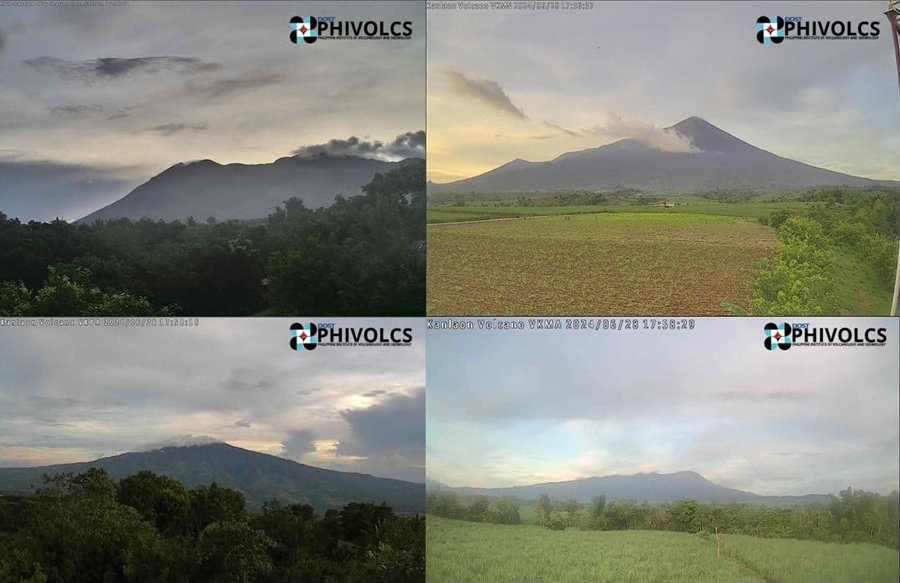• CHERYL G. CRUZ
The Philippine Institute of Volcanology and Seismology issued this evening, June 28, a notice of elevated volcanic sulfur dioxide (SO2) gas emission from the summit crater of the Kanlaon Volcano in Negros Island.
Phivolcs said that an averaged 5,397 tonnes/day of volcanic SO2 gas emission was recorded Friday, “the highest emission from the volcano recorded since instrumental gas monitoring began”.
Mount Kanlaon has been degassing increased concentrations of volcanic SO2 this year at an average rate of 1,897 tonnes/day, but emission since the June 3 eruption has been particularly elevated at a current average of 3,175 tonnes/day, the Phivolcs said.

It added that volcanic earthquake activity, at an average of 10 events a day, has persisted since the eruption. “Ground deformation data from continuous GPS and electronic tilt measurements have been recording medium-term inflation of the Kanlaon edifice since March 2022 and a shorter-term inflation of the eastern flank since 2023, indicating slow but sustained pressurization within the volcano”.
These overall monitoring parameters indicate that magmatic processes beneath the volcano “may be driving current unrest, causing persistently high concentrations of volcanic gas emission, swelling of the edifice, and the occasional volcanic earthquake activity,” the Phivolcs advisory said.
It reminds the public that Alert Level 2, or increasing unrest, prevails over Mount Kanlaon. “This means that there is current unrest driven by shallow magmatic processes that could eventually lead to explosive eruptions, or even precede hazardous magmatic eruption at the summit crater.”
Entry into the four-kilometer-radius Permanent Danger Zone (PDZ) is prohibited so as to minimize risks from volcanic hazards, such as pyroclastic density currents, ballistic projectiles, rockfall, and others.
Civil aviation authorities must also advise pilots to avoid flying close to the volcano’s summit as ash and ballistic fragments from sudden eruption can be hazardous to aircraft, the advisory stressed, adding that communities living beside river systems on the southern and western slopes, especially those that have already experienced lahars and muddy streamflows, are advised to take precautionary measures when heavy rainfall over the volcano has been forecast or has begun. | CGC




